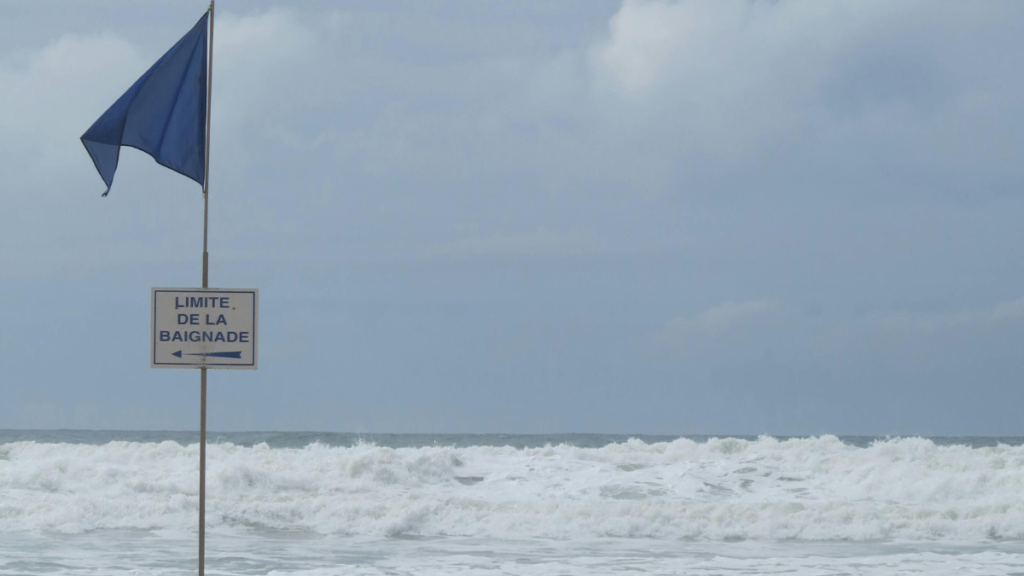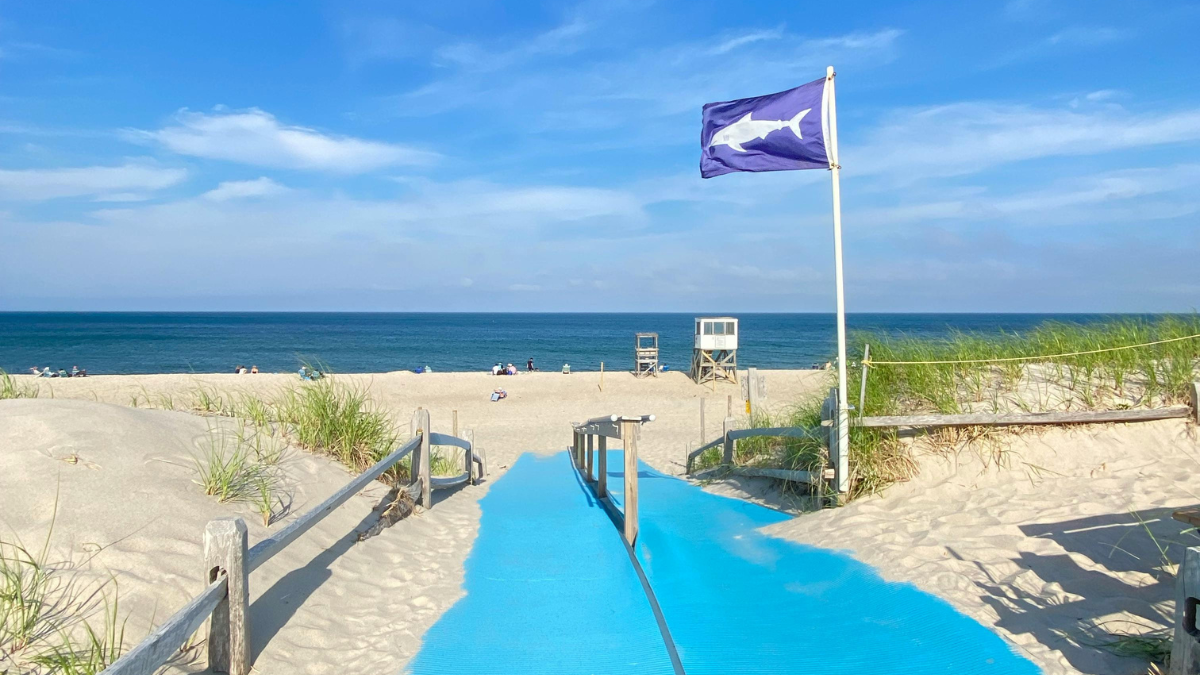Planning a refreshing dip in the ocean? You might want to pay close attention to the beach flags before you dive in. While the familiar red flag warns of dangerous swimming conditions, a lesser-known purple flag beach is becoming increasingly common on beaches across the world. But what does the purple flag mean?

The purple flag signifies the presence of potential hazards in the water, most commonly jellyfish or other stinging marine life. These creatures can deliver painful stings, and some species can even be dangerous, especially for people with allergies.
The exact meaning of the purple flag can vary slightly depending on the specific beach and location. In some areas, the purple flag might be raised alone, indicating jellyfish are present. In other locations, the purple flag might be flown alongside a yellow flag, which typically warns of moderate water conditions like strong currents or choppy waves.
Why Are There More Purple Flags?
There isn’t a single reason for the increase in purple flags on beaches. Experts believe a combination of factors could be at play. Overfishing can disrupt the natural balance of the ocean ecosystem, leading to an increase in jellyfish populations. Climate change might also be impacting jellyfish populations, with warmer water temperatures creating a more favorable environment for them to thrive.
What Should You Do When You See a Purple Flag?
While the purple flag doesn’t necessarily mean the beach is closed, it does serve as a warning to exercise caution when entering the water. Here are some key things to keep in mind:
- Be Aware of Your Surroundings: Keep an eye out for jellyfish or other stinging creatures in the water. These creatures can sometimes be difficult to spot, so it’s important to stay vigilant.
- Consider Protective Gear: Some beachgoers choose to wear protective clothing like rashguards or wetsuits when jellyfish are present. These can offer some added protection against stings.
- Know What to Do if You Get Stung: If you do get stung by a jellyfish or other marine creature, it’s important to stay calm. Remove any tentacles that may be stuck to your skin using tweezers or gloved hands. Rinse the affected area with salt water and avoid using freshwater, which can worsen the sting. Soak the area in hot water (as hot as you can comfortably tolerate) for 20-30 minutes. Over-the-counter pain relievers can help manage discomfort. If the sting is severe, or if you experience difficulty breathing, seek medical attention immediately
Jellyfish on Purple Flag Beach.
While jellyfish are the most common concern associated with purple flags, the flag can also indicate the presence of other potentially harmful creatures in the water. This could include stingrays, Portuguese Man O’ War, or even fire coral. If you’re unsure what kind of marine life might be present, it’s always best to err on the side of caution and avoid entering the water.
Local Authorities Take Action:
Beach safety is a top priority for coastal communities. Local authorities are increasingly using purple flags to raise awareness about potential hazards in the water. Lifeguards are also being trained to identify and handle jellyfish stings. Additionally, some beaches are implementing educational programs to inform beachgoers about jellyfish and other stinging marine life.
Staying Safe at the Beach:
Whether you encounter a purple flag or not, there are some general safety tips to remember whenever you visit the beach:
- Swim in Designated Areas: Only swim in areas with lifeguards on duty.
- Never Swim Alone: Always have a buddy with you when swimming in the ocean.
- Heed Warning Signs: Pay attention to all beach flags and signage, including the purple flag.
- Know Your Limits: Don’t swim beyond your capabilities or in unfamiliar conditions.
- Be Sun Safe: Apply sunscreen regularly and wear protective clothing.
- Stay Hydrated: Drink plenty of water to avoid dehydration.
By following these simple safety tips and being aware of the meaning of the purple flag, you can help ensure a fun and safe day at the beach.

I Am The Author Of This Lovely Blog…
This beautiful blog is written by me. I love writing blogs and sharing my experiences with my dear readers. My name is Bharat. I love visiting new places, eating delicious food, and enjoying beaches and waterfalls.

